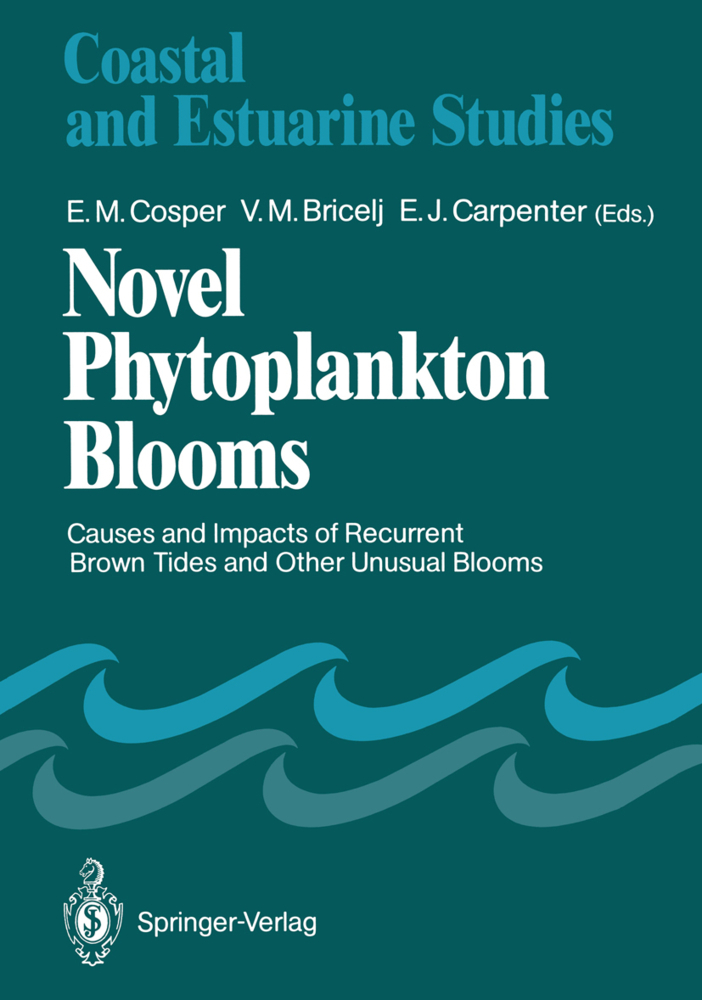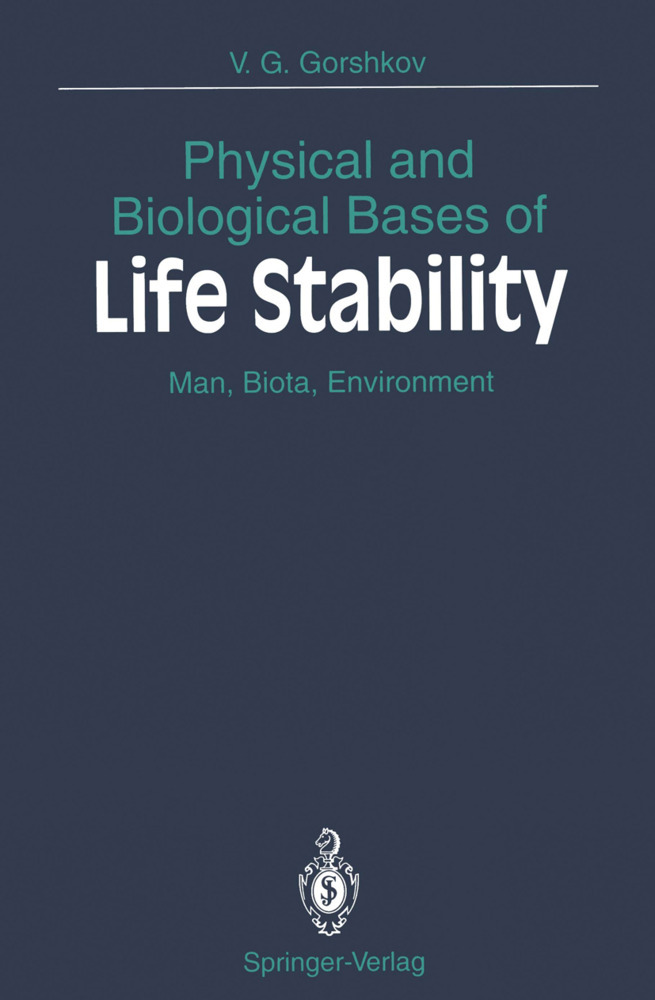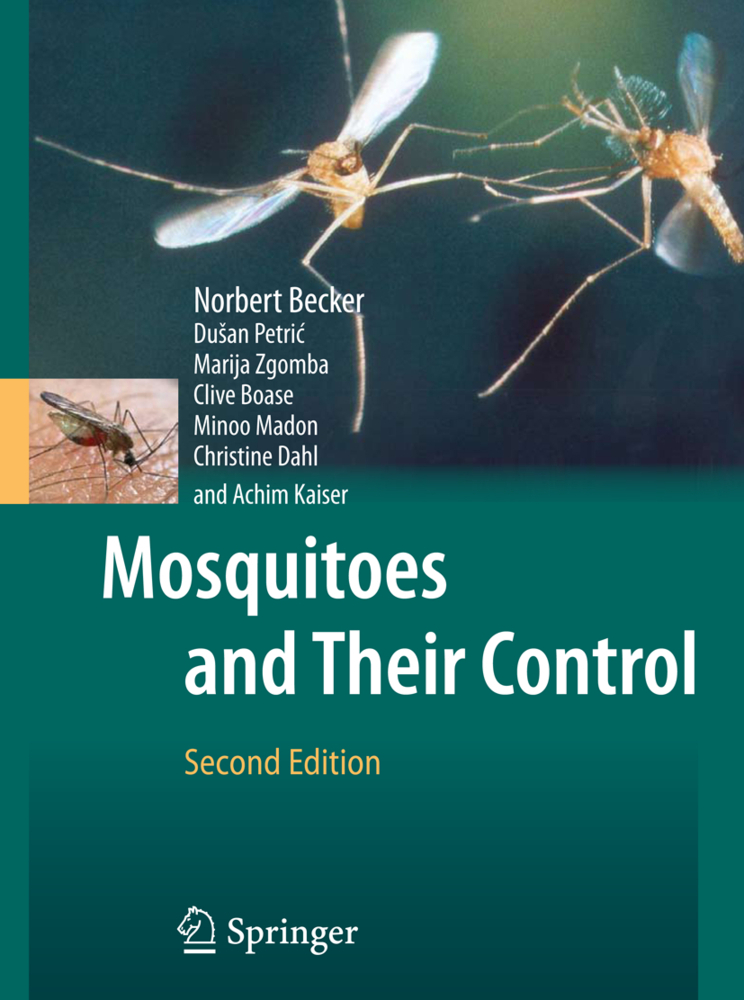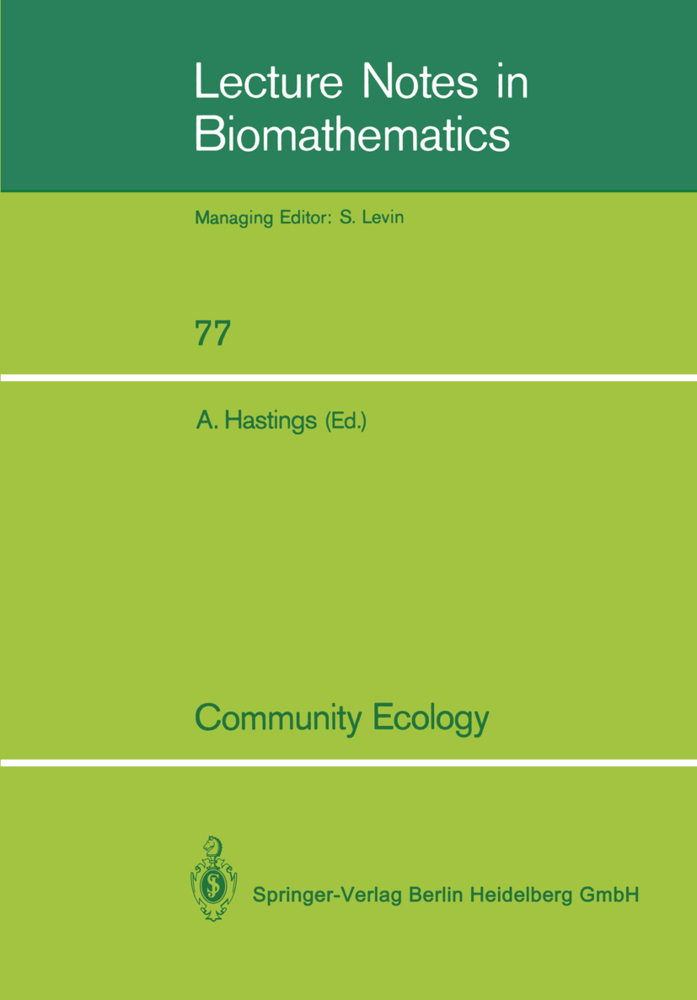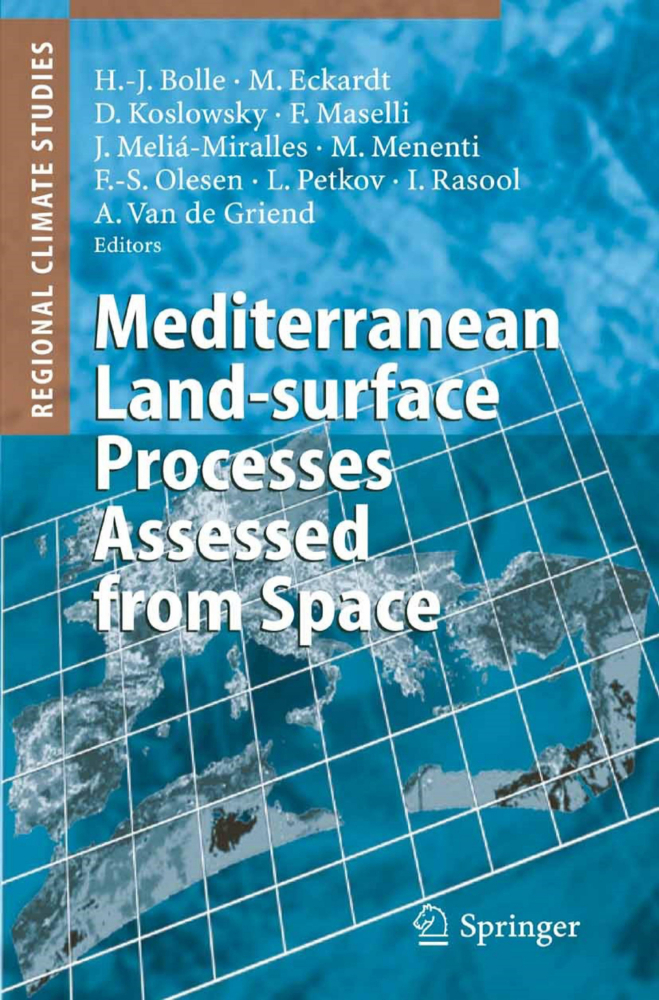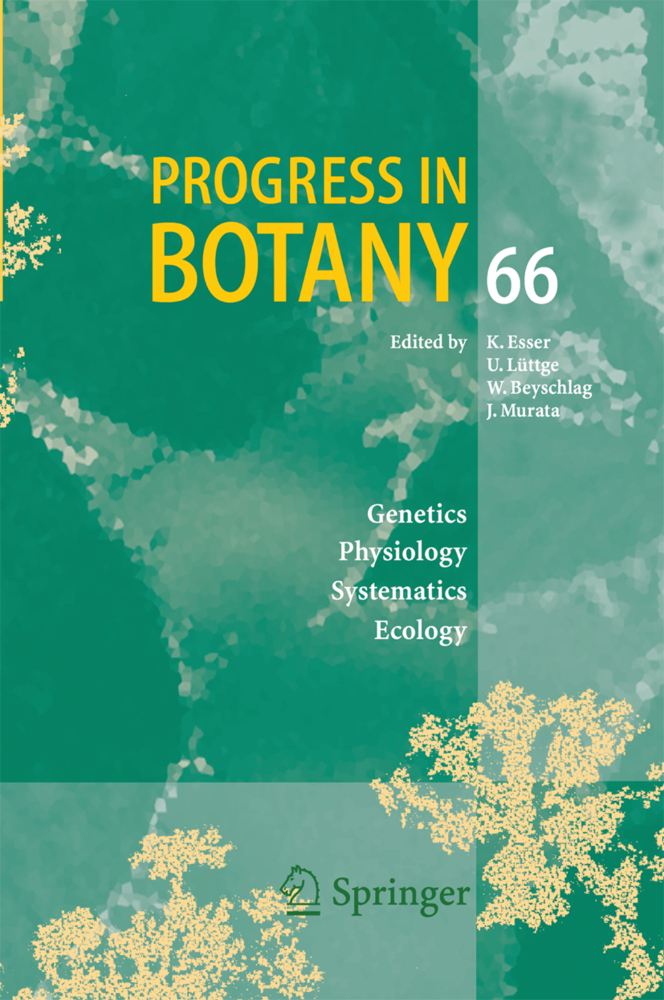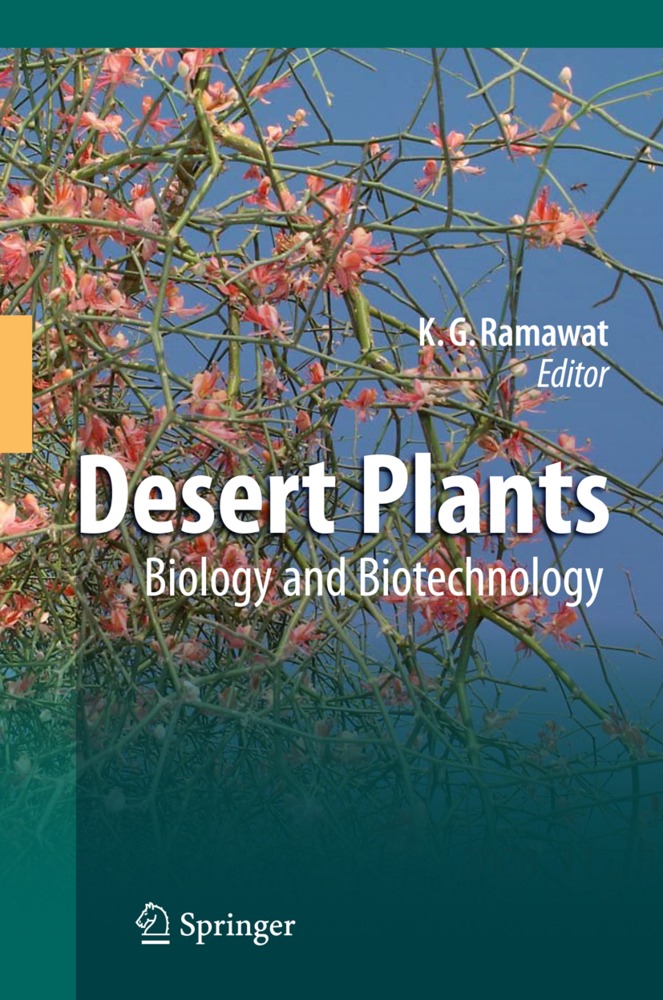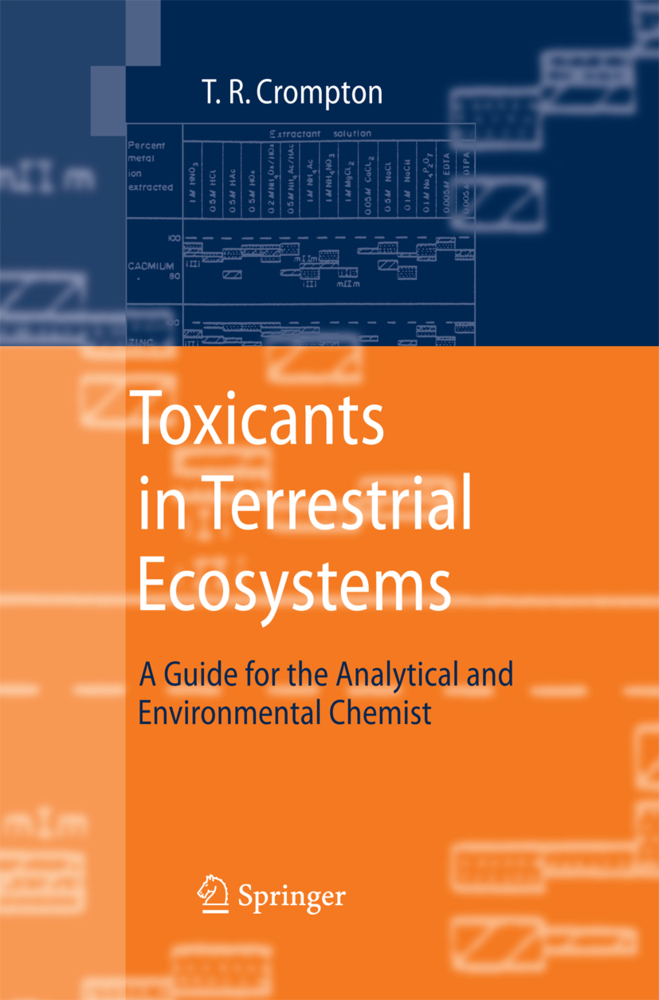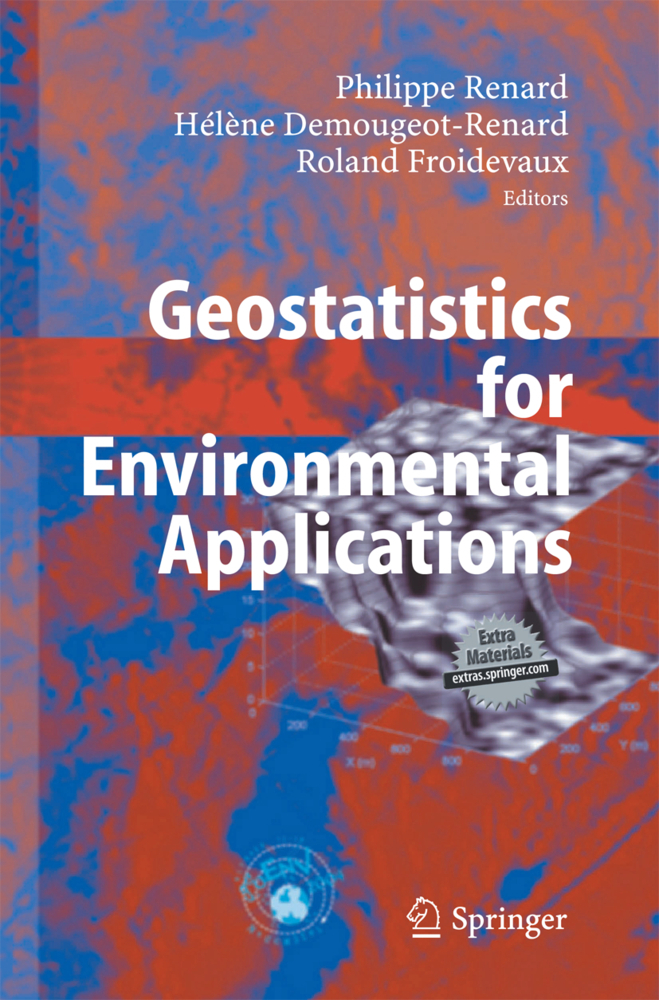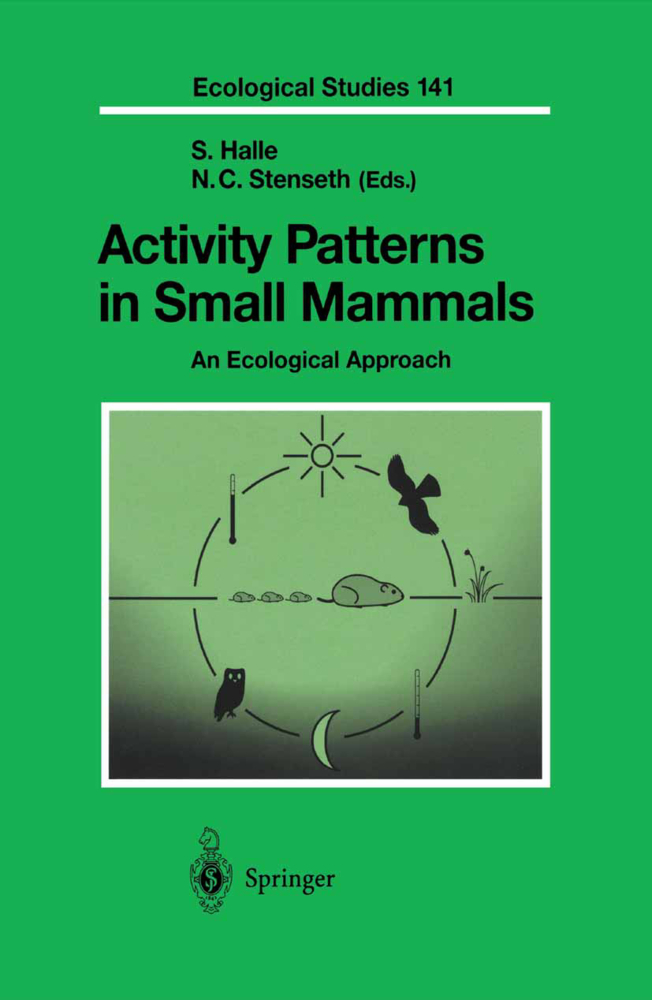Novel Phytoplankton Blooms
Causes and Impacts of Recurrent Brown Tides and Other Unusual Blooms
Novel Phytoplankton Blooms
Causes and Impacts of Recurrent Brown Tides and Other Unusual Blooms
A massive phytoplankton bloom, locally termed "brown tide", suddenly appeared in Long Island marine bays in 1985, colored the water a dark brown, decimated eelgrass beds and caused catastrophic starvation and recruitment failure of commercially important bay scallop populations. These "brown tide" blooms, caused by a very small, previously undescribed chrysophyte alga, have directly affected the estuarine environments of three northeastern American states: Rhode Island, New York and New Jersey. other phytoplankton blooms such as "red tides" caused by dinoflagellates and "green tides" from chlorophytes as well as blue-green algae blooms have long been recognized and studied world wide, however, the unusual nature of these "brown tide" blooms caught the interest of many people. Scientists were particularly intrigued by the discovery of a previously unknown microalga which provided the opportunity to learn more about small microalgae, picoplankters, which are usually ignored due to the difficulty in identifying species. A symposium entitled, "Novel Phytoplankton Blooms: Causes and Impacts of Recurrent Brown Tides and Other Unusual Blooms", was convened on October 27 and 28 at the State University of New York at Stony Brook on Long Island, with 220 registrants and nearly 50 scientific papers presented by researchers from the united States as well as Europe. The conference documented unusual bloom occurrences of recent and past years on a worldwide basis as well as northeast regional recurrences of the previously unknown "brown tide" blooms.
2. Autotrophic Picoplankton in Narragansett Bay and Their Interaction With Microplankton
3. Immunochemical Approaches to the Identification of the Ultraplankton: Assets and Limitations
4. Photosynthetic Pigment Composition of the Brown Tide Alga: Unique Chlorophyll and Carotenoid Derivatives
5. Absorption and Fluorescent Characteristics of the Brown Tide Chrysophyte. Its Role on Light Reduction in Coastal Marine Environments
6. Lipid Composition and Nutritional Value of the Brown Tide Alga Aureococcus anophagefferens
7. Dimethylsulfide Production and Marine Phytoplankton: An Additional Impact of Unusual Blooms
B. Occurrence and Distribution of the "Brown Tide"
8. The Spatial and Temporal Distribution of "Brown Tide" in Eastern Long Island
9. Primary Productivity and Growth Dynamics of the "Brown Tide" in Long Island Embayments
10. The 1985 "Brown-Tide" and the Open Phytoplankton Niche in Narragansett Bay During Summer
11. Development and Distribution of a Brown-Water Algal Bloom in Barnegat Bay, New Jersey with Perspective on Resources and Other Red Tides in the Region
12. Immunofluorescent Detection of the Brown Tide Organism, Aureococcus anophagefferens
C. Environmental Factors Influencing "Brown Tide" Blooms
13. Role of Environmental Variables, Specifically Organic Compounds and Micronutrients, in the Growth of the Chrysophyte Aureococcus anophagefferens
14. Brown Tide Bioassay: Growth of Aureococcus anophagefferens Hargraves et Sieburth in Various Known Toxicants
15. Trophic Interactions Between Nano- and Microzooplankton and the "Brown Tide"
16.The Case for Meteorologically Driven Fluctuations in Residence Times of Long Island Waters Subject to Algal Blooms
17. Brown Tide Dynamics as a Catastrophe Model
18. An Examination of the Environmental Factors Important to Initiating and Sustaining "Brown Tide" Blooms
D. Other Unusual Microalgal Blooms
19. The Null Case of the Paradox of the Plankton
20. Gulf Stream Transport of the Toxic Red Tide Dinoflagellate Ptychodiscus brevis from Florida to North Carolina
21. Zooplankton Feeding Ecology: Copepod Grazing During an Expatriate Red Tide
22. Historical Perspective of Phytoplankton Blooms on Long Island and the Green Tides of the 1950's
23. The Chrysochromulina polylepis Bloom in Scandinavian Waters During Spring 1988
24. From Anoxia to Fish Poisoning: The Last Ten Years of Phytoplankton Blooms in Swedish Marine Waters
25. An Extraordinary Red Tide and Fish Kill in Narragansett Bay
26. Primary Production and the Global Epidemic of Phytoplankton Blooms in the Sea: A Linkage?
E. Impacts on Shellfish
27. Overview of Bay Scallop (Argopecten irradians) Landings
28. The Feeding Physiology and Growth of Bay Scallops and Mussels
29. Effects of the Brown Tide Alga on Growth, Feeding Physiology and Locomotory Behavior of Scallop Larvae (Argopecten irradians)
30. Are Metabolites from the Brown Tide Alga, Aureococcus anophagefferens, Deleterious to Mussel Feeding Behavior?
31. Testing and Application of Biomonitoring Methods for Assessing Environmental Effects of Noxious Algal Blooms
32. Detrimental Biological Effects of Phytoplankton Blooms Deserve Increased Attention
F. Impacts of Blooms on Finfish and Zooplankton
33. Abundance and Distribution of Zooplankton and Ichthyoplankton in Great South Bay, New York During the Brown TideOutbreaks of 1985 and 1986
34. Effect of the "Brown Tide" on Feeding, Size and Egg Laying Rate of Adult Female Acartia tonsa
35. Potential Change in the Distribution of Larval Fish Within Great South Bay, New York in Response to Recurrent Phytoplankton Blooms
36. Growth Rates of Bay Anchovy (Anchoa mitchilli) in Great South Bay Under Recurrent Brown Tide Conditions, Summers 1987 and 1988
G. Impacts of Blooms on Eelgrass
37. Effect of "Brown Tide" Shading on Eelgrass (Zostera marina L.) Distributions
38. Simple Model of Eelgrass Growth and Water Quality: Another Catastrophe Theory?
H. Environmental Management
39. Winter Burial of Transplanted Bay Scallops
40. The Fishery Manager's Perspective on Unusual Algae Blooms
41. Brown Tide Comprehensive Assessment and Management Program
42. Water Quality Monitoring and Modeling for the Peconic Bay BTCAMP
I. Postscript
43. Epilogue to the 2nd Brown Tide Conference: Are Aureococcus and Other Nuisance Algal Blooms Selectively Enriched by the Runoff of Turf Chemicals?
44. The Possible Role of Lawn Fertilizers and Pesticide Use in the Occurrence of the Brown Tide
J. Index.
A. Characterization of the "Brown Tide" Microalga
1. Picoplankton Ultrastructure: A Decade of Preparation for the Brown Tide Alga, Aureococcus anophagefferens2. Autotrophic Picoplankton in Narragansett Bay and Their Interaction With Microplankton
3. Immunochemical Approaches to the Identification of the Ultraplankton: Assets and Limitations
4. Photosynthetic Pigment Composition of the Brown Tide Alga: Unique Chlorophyll and Carotenoid Derivatives
5. Absorption and Fluorescent Characteristics of the Brown Tide Chrysophyte. Its Role on Light Reduction in Coastal Marine Environments
6. Lipid Composition and Nutritional Value of the Brown Tide Alga Aureococcus anophagefferens
7. Dimethylsulfide Production and Marine Phytoplankton: An Additional Impact of Unusual Blooms
B. Occurrence and Distribution of the "Brown Tide"
8. The Spatial and Temporal Distribution of "Brown Tide" in Eastern Long Island
9. Primary Productivity and Growth Dynamics of the "Brown Tide" in Long Island Embayments
10. The 1985 "Brown-Tide" and the Open Phytoplankton Niche in Narragansett Bay During Summer
11. Development and Distribution of a Brown-Water Algal Bloom in Barnegat Bay, New Jersey with Perspective on Resources and Other Red Tides in the Region
12. Immunofluorescent Detection of the Brown Tide Organism, Aureococcus anophagefferens
C. Environmental Factors Influencing "Brown Tide" Blooms
13. Role of Environmental Variables, Specifically Organic Compounds and Micronutrients, in the Growth of the Chrysophyte Aureococcus anophagefferens
14. Brown Tide Bioassay: Growth of Aureococcus anophagefferens Hargraves et Sieburth in Various Known Toxicants
15. Trophic Interactions Between Nano- and Microzooplankton and the "Brown Tide"
16.The Case for Meteorologically Driven Fluctuations in Residence Times of Long Island Waters Subject to Algal Blooms
17. Brown Tide Dynamics as a Catastrophe Model
18. An Examination of the Environmental Factors Important to Initiating and Sustaining "Brown Tide" Blooms
D. Other Unusual Microalgal Blooms
19. The Null Case of the Paradox of the Plankton
20. Gulf Stream Transport of the Toxic Red Tide Dinoflagellate Ptychodiscus brevis from Florida to North Carolina
21. Zooplankton Feeding Ecology: Copepod Grazing During an Expatriate Red Tide
22. Historical Perspective of Phytoplankton Blooms on Long Island and the Green Tides of the 1950's
23. The Chrysochromulina polylepis Bloom in Scandinavian Waters During Spring 1988
24. From Anoxia to Fish Poisoning: The Last Ten Years of Phytoplankton Blooms in Swedish Marine Waters
25. An Extraordinary Red Tide and Fish Kill in Narragansett Bay
26. Primary Production and the Global Epidemic of Phytoplankton Blooms in the Sea: A Linkage?
E. Impacts on Shellfish
27. Overview of Bay Scallop (Argopecten irradians) Landings
28. The Feeding Physiology and Growth of Bay Scallops and Mussels
29. Effects of the Brown Tide Alga on Growth, Feeding Physiology and Locomotory Behavior of Scallop Larvae (Argopecten irradians)
30. Are Metabolites from the Brown Tide Alga, Aureococcus anophagefferens, Deleterious to Mussel Feeding Behavior?
31. Testing and Application of Biomonitoring Methods for Assessing Environmental Effects of Noxious Algal Blooms
32. Detrimental Biological Effects of Phytoplankton Blooms Deserve Increased Attention
F. Impacts of Blooms on Finfish and Zooplankton
33. Abundance and Distribution of Zooplankton and Ichthyoplankton in Great South Bay, New York During the Brown TideOutbreaks of 1985 and 1986
34. Effect of the "Brown Tide" on Feeding, Size and Egg Laying Rate of Adult Female Acartia tonsa
35. Potential Change in the Distribution of Larval Fish Within Great South Bay, New York in Response to Recurrent Phytoplankton Blooms
36. Growth Rates of Bay Anchovy (Anchoa mitchilli) in Great South Bay Under Recurrent Brown Tide Conditions, Summers 1987 and 1988
G. Impacts of Blooms on Eelgrass
37. Effect of "Brown Tide" Shading on Eelgrass (Zostera marina L.) Distributions
38. Simple Model of Eelgrass Growth and Water Quality: Another Catastrophe Theory?
H. Environmental Management
39. Winter Burial of Transplanted Bay Scallops
40. The Fishery Manager's Perspective on Unusual Algae Blooms
41. Brown Tide Comprehensive Assessment and Management Program
42. Water Quality Monitoring and Modeling for the Peconic Bay BTCAMP
I. Postscript
43. Epilogue to the 2nd Brown Tide Conference: Are Aureococcus and Other Nuisance Algal Blooms Selectively Enriched by the Runoff of Turf Chemicals?
44. The Possible Role of Lawn Fertilizers and Pesticide Use in the Occurrence of the Brown Tide
J. Index.
Cosper, E. M.
Bricelj, V. M.
Carpenter, E. J.
| ISBN | 978-3-642-75282-7 |
|---|---|
| Artikelnummer | 9783642752827 |
| Medientyp | Buch |
| Auflage | Softcover reprint of the original 1st ed. 1989 |
| Copyrightjahr | 2011 |
| Verlag | Springer, Berlin |
| Umfang | XII, 799 Seiten |
| Abbildungen | XII, 799 p. |
| Sprache | Englisch |

